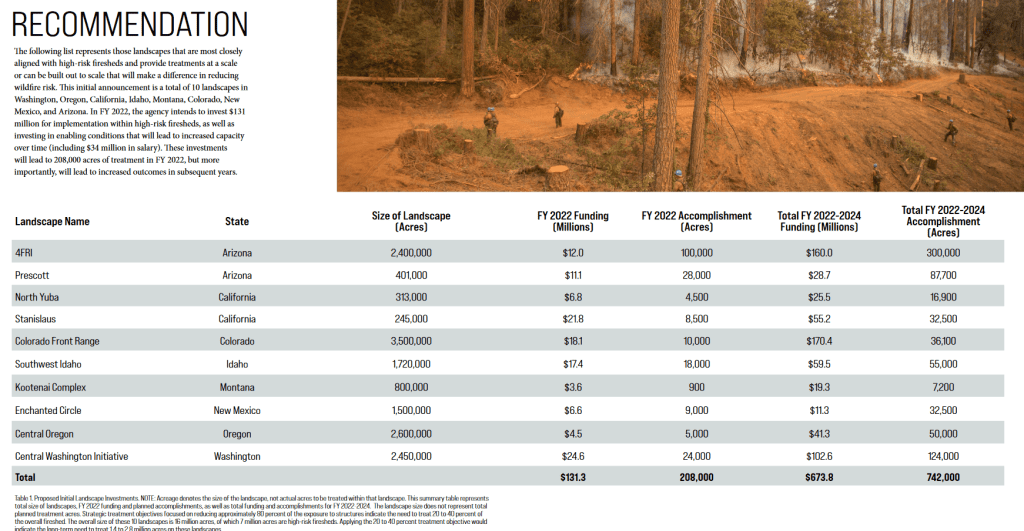Interesting description of these efforts here. You can click on either image (above and below) and they will be large enough to read (at least on some devices).
Here are the considerations that led to those choices:
These considerations are on page 26. I think the social justice discussion would have been interesting to sit in on. Thinking about the Colorado Front Range, for example, there are certainly poor people in cities that could be influenced by smoke. There are more people who could be harmed in cities, for sure, by their very nature of being concentrated human populations. And, of course, many parts of the Front Range have exceedingly high income folks in the forests or the edge (think Boulder) and the less-well-off tend to spread to the grasslands east. But if we’re thinking cumulative impacts of smoke as air pollution, it would be worse where there is already pollution problems (like the Denver Metro area).
Nevertheless, most of the landscapes selected were not near large cities. Anyway, not that I think that there is a “right way” and a “wrong way” to do social justice, as it’s quite complex, it would be interesting to know more of the details. I also wonder whether the Departments of the Interior and Agriculture think about it the same way. Does anyone know?

I wonder what has changed about 4FRI that now there is the expectation that they will accomplish 300,000 acres over the next three years? The support for it has remained steadfast in spite of some fairly modest accomplishments. I really hope they can pull it off. It has the potential to be a good project.
Odd that western Oregon isn’t on this list. I would have thought it would have been right behind California and ahead of Arizona and central Oregon.
Along with being probably the most sparsely settled part of forested Montana, the Kootenai National Forest has historically had the most intense “vegetation management” – which has apparently not yet fixed the problem. Go figure.
Perhaps we should not consider “overstory removal” to be a solution for ‘crowded forests’? “Overstory removal” is not the right tool to achieve ‘fire safety’.
Interesting point. The Kootenai sold 105,000 ccf last FY so yes, pretty active program. Only a handful of relatively small cities/towns. They will be spending $2,680/acre to treat 7,200 acres. There has got to be more to this story.
Dave.. maybe you could ask around..and find out.